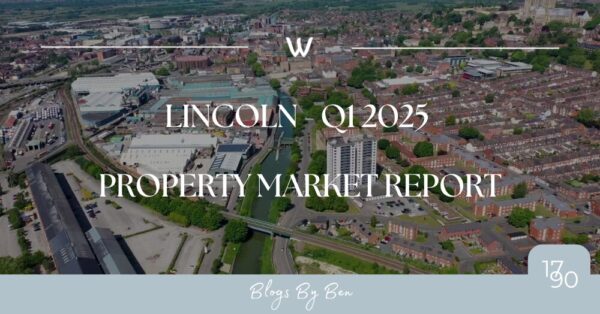Creating a compelling property description is key to attracting potential buyers or renters. This article discusses strategies to emphasize a property’s unique features, helping your description stand out in a competitive market. We cover methods like using descriptive language and highlighting the surrounding community to make your listing not only informative but also persuasive. Turn your property descriptions into engaging narratives that capture attention and generate interest.
1. Use Strong and Descriptive Adjectives
In property writing, using descriptive adjectives is crucial for creating compelling property descriptions that connect with potential buyers.
By employing vivid language, you can craft engaging descriptions that capture the property’s essence and create an emotional connection, increasing its appeal.
Use adjectives like “opulent” to describe luxury features such as a grand chandelier or a gourmet kitchen with modern appliances. Highlight architectural styles with terms like “quaint” for a cosy cottage or “sleek” for a modern flat to help buyers envision their future homes.
Describe layouts with words like “spacious” for ample room or “inviting” for a warm atmosphere. These descriptive choices create a vivid image that helps buyers picture themselves living in the space, making the property more desirable.
2. Highlight Key Features and Amenities
A key strategy in property writing is to emphasise the features and amenities that make a property stand out, helping potential buyers see its unique benefits.
For example, highlighting energy efficiency is appealing to environmentally conscious buyers, with features such as:
- Efficient heating and cooling systems
- Double-glazed windows
- Energy-saving appliances
Including smart home technology, such as automated lighting, security systems, and programmable thermostats, demonstrates modern convenience and attracts tech-savvy buyers.
Luxury upgrades such as granite worktops, wooden floors, and spa-like bathrooms can enhance the property’s appearance and value.
Using high-quality images and virtual tours effectively showcases these features, attracting potential buyers by giving them a glimpse of the lifestyle the property offers.
3. Provide Specific Details and Measurements
Including specific details and measurements is key in property writing as it helps potential buyers clearly understand the layout of the property and overall space, allowing them to envisage their future home.
Accurate measurements help visualise how furniture will fit and demonstrate the practicality of different areas, encouraging comfort and usefulness.
Detailed floor plans are valuable for illustrating the flow and connection between rooms, which can greatly affect buyer interest.
When buyers see thorough and precise property listings, they feel more confident in evaluating the investment potential, making choices that align with their lifestyle and financial goals.
This clarity boosts confidence and increases the likelihood of progressing towards a purchase.
4. Use Persuasive Language
Using persuasive language in real estate writing is key to attracting potential buyers and prompting them to act. This involves creating catchy titles and engaging property descriptions that emphasise the unique features of each property.
Beyond appealing descriptions, using emotional selling techniques can connect with buyers. For example, instead of just saying a property has a large garden, describe it as an ideal place for family gatherings or evening barbecues under the stars.
Such imagery creates a sense of desire and connection. Including a strong call to action, like “Imagine hosting summer barbecues in your new garden; contact us today to schedule your private viewing! can increase interest and lead to immediate enquiries.
This mix of vivid language and strong invitations not only highlights the property’s features but also sparks the buyer’s imagination, making them eager to learn more.
5. Showcase the Surrounding Neighborhood and Community
Showcasing the neighbourhood and community is important in real estate writing, as it provides context and highlights the lifestyle buyers can expect when purchasing a property.
By focusing on the area’s unique features and amenities, sellers can create a vivid picture of daily life. Nearby attractions such as parks, restaurants, and shopping centres can make a home more appealing.
Highlighting community amenities like recreational facilities, cultural hubs, and active organisations often connects well with buyers.
Discussing transport options and school districts can reassure families about their investment, offering insights into accessibility and education quality. These local details not only attract interest but also inform buyers about what makes the community a desirable place to live.
6. Use Visual Aids, Such as Photos and Videos
Using visual aids such as professional photography and virtual tours is crucial for improving property listings and attracting potential buyers by providing a detailed view of the space.
High-quality images help create emotional connections, allowing buyers to imagine themselves in their future homes. When buyers can explore a property through impressive visuals, it highlights the best features and encourages them to picture their personal experiences there.
Effective staging tips enhance the property’s appeal, making it feel more inviting and liveable. This focus on aesthetics not only grabs attention but also fosters deeper engagement, increasing interest and the chances of a successful sale.
7. Emphasise Unique Selling Points
Emphasising unique features in your property listings helps distinguish a property from competitors and appeals directly to potential buyers’ specific needs and desires.
Highlighting luxury features like modern appliances, spacious layouts, and stunning views can attract discerning clients. Offering customisation options, such as personalised interior designs or smart home technologies, can further entice buyers, making the property feel like a personalised sanctuary.
Mentioning any historical significance can add depth and authenticity to the property’s story. These unique elements not only increase the property’s appeal but also make it memorable, allowing prospective buyers to envision themselves living in a space that truly reflects their lifestyle.
8. Use Storytelling Techniques
Using storytelling in property writing can create an engaging narrative for potential buyers, allowing them to envision the lifestyle a property offers, not just the property itself.
Imagine living in a sunny kitchen where children’s laughter mixes with the smell of freshly baked bread. As the sun sets, the cosy sitting room becomes a place for sharing memories and quiet conversations.
By highlighting these everyday moments and the unique history within a property’s walls, the story turns a house into a home full of possibilities. Descriptive language is key in creating these vivid scenes, helping potential buyers feel the warmth and comfort the property offers.
9. Include Testimonials or Reviews from Previous Tenants
Including testimonials or reviews from past tenants can greatly improve a property’s reputation and build trust with potential buyers, offering proof of the property’s value and appeal.
These endorsements show the positive experiences of former tenants and create emotional connections that can resonate with future tenants or buyers. When someone shares how a property positively affected their life, it creates a vivid picture beyond just statistics or features.
This personal touch can motivate potential clients, helping them make decisions based on relatable, shared experiences.
Therefore, effectively gathering and showcasing these testimonials can boost buyer confidence and increase interest in the property.
10. Use a Call-to-Action to Encourage Inquiries
A well-designed call-to-action (CTA) is crucial in any property listing, encouraging potential buyers to take actions such as scheduling a viewing, requesting more information, or making an enquiry.
To create effective CTAs, align them with your broader digital marketing strategies to boost property visibility, which involves understanding your target audience and their motivations.
For example, younger buyers may prefer casual and engaging language, while luxury property markets might require a more sophisticated tone. Techniques such as using action-oriented verbs, creating a sense of urgency, or promoting exclusive offers can greatly increase engagement.
Adapting CTAs for different platforms—such as social media compared to websites—ensures they connect with varied audiences, maximising conversion opportunities. Using data analytics can further enhance these efforts, allowing for more personalised and effective messaging.



